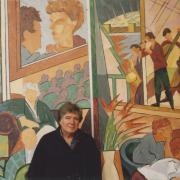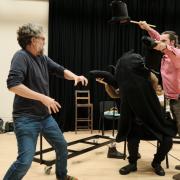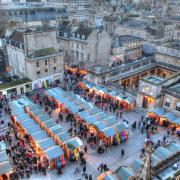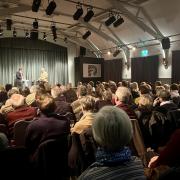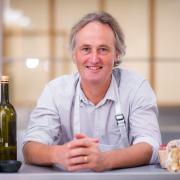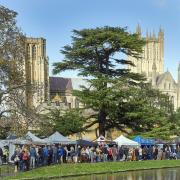One of the UK’s leading pottery designers talks to Sarah Ford about life at the cutting edge of fashion

As one half of trailblazing designer duo Foale & Tuffin, Sally Dennis dressed the likes of Twiggy, Jane Asher and Julie Christie in the 1960s.
Their fun clothes struck a chord with busy young women keen to throw off the 1950s look worn by their mothers. And the wives and girlfriends of pop stars bought the clothes sold in their Carnaby Street store.
Sally made the move to Somerset in the 1970s and later swapped a career in textiles for the world of ceramics when she and her husband, Richard Dennis, rescued the ailing Moorcroft Pottery.
They launched Dennis Chinaworks in 1993 and the studios are based in the converted stables of their Victorian gothic rectory in the South Somerset village of Shepton Beauchamp.
On my visit we sit and chat at a work table - their magnificent pots lining the walls – and Sally takes me back to her youth. She tells me her father had been a very keen artist and was determined that, unlike him, his daughter would get to art school.
Sally Tuffin and Marion Foale met at Walthamstow School of Art before studying fashion at the Royal College of Art and then deciding to work together.

“The plan was that you left college and went to work for a big company and Marion and I thought, well actually, they’re not doing anything we like so we’ll give it a try ourselves,” Sally recalls.
Their style was different, comfortable to wear and in tune with the 1960s youth scene. In the beginning they did all the work on sewing machines that they had been given for their 21st birthdays.
“We lived in Nottinghill Gate (it wasn’t smart then) and would go to a retail shop to buy the fabric, but when things developed later we realised you could buy wholesale,” Sally laughs.
“After making the clothes we’d get on the bus down to Knightsbridge to Woollens 21 shop and she would put them in the window. They would sell out and we would have to make twice as many!”
Later they opened a shop on world-famous Carnaby Street, a stone’s throw from Vogue, and Jenny Boyd - the former wife of Mick Fleetwood and George Harrison’s sister-in-law - was their house model. Some of their designs, such as the shift dress with its clever ‘D’ shaped pocket, are in the Victoria and Albert Museum.
Sally shows me a book by Iain R Webb called Foale and Tuffin. The Sixties. A Decade in Fashion. In it there’s a portrait taken for Life magazine by Norman Parkinson of a collection of young designers on Chelsea Embankment. Sally and Marion are on the wall hanging from a lamppost above the group which includes Mary Quant and Jean Muir.

“We weren’t aware that it was Parks and that he was a very important photographer,” Sally recalls.
“We all went across to the pub afterwards and had a very jolly evening; he was really good fun.”
Iain describes his book as celebrating: “the two bolshy, ‘pint-sized’ little girls who for a decade made a big impression on the British fashion scene.”
And Sally was to continue to make a ‘big impression’ with her future work.
When she and husband Richard Dennis OBE moved to Somerset with their two young sons Sally started Tuppence Coloured, a mail¬order firm selling ready-to-sew children’s clothes. Future fashion designer Alice Temperley was a young model together with sister Mary. When they branched out into adult sizes, Tuppence Coloured dressed Delia Smith for her first TV cookery programme!
Richard had trained with Sotheby’s before establishing an antique glass and ceramic business and a publishing house producing specialist books for collectors. Sally became a partner and design director of the Moorcroft Pottery from 1986 to 1993, when she and Richard came to its aid, transforming Moorcroft back into a thriving business once more.
“I was thrown in the deep end, with a piece of clay to decorate instead of a body,” Sally recalls.
“I’d never done it before but the interesting thing is that making a pattern for a circular object is much the same as making a pattern for a body. So I made dress patterns to fit pots and showed the decorators at Moorcroft how to fit the pattern round; instead of putting a flower on the front and a flower on the back we developed an all-over pattern.”
Since 1993 Sally has been designing pots for Dennis Chinaworks. The work is highly prized and they have made commissioned works for many prestigious galleries, museums and organisations such as the Andrew Lloyd Webber Collection in the Royal Academy of Arts and the Pugin Exhibition in the Victoria and Albert Museum.
Sally has been described by an expert as ‘up there with William Moorcroft, Clarice Cliff and Henry Doulton’. While much of the work is inspired by Sally’s love of the arts and crafts movement, there is obviously a strong fashion and textile influence, art nouveau and a popular animal theme.
Son Buchan joined the company after studying fine art at Wimbledon School of Art and he has brought an abstract element to the collection with more colour-based, geometric pieces.
The pots are thrown by Rory McLeod and painted by a talented team of artists in the light, airy decorating room which once housed the carriages for the rectory.
In other buildings on this charming site there’s an opportunity to buy some of the glass collection gathered by Richard over the years, as well as the chance to view his rare collection of children’s china dating from 1790 to 1990.
The business is a real family affair now that Buchan’s wife, Jessica, has recently opened the tearooms. Open for brunch, lunch and afternoon tea from Tuesday to Saturday, 11am-4pm, the delightfully-converted building provides a relaxing place to sit between viewing the pots and watching the decorators at work.










